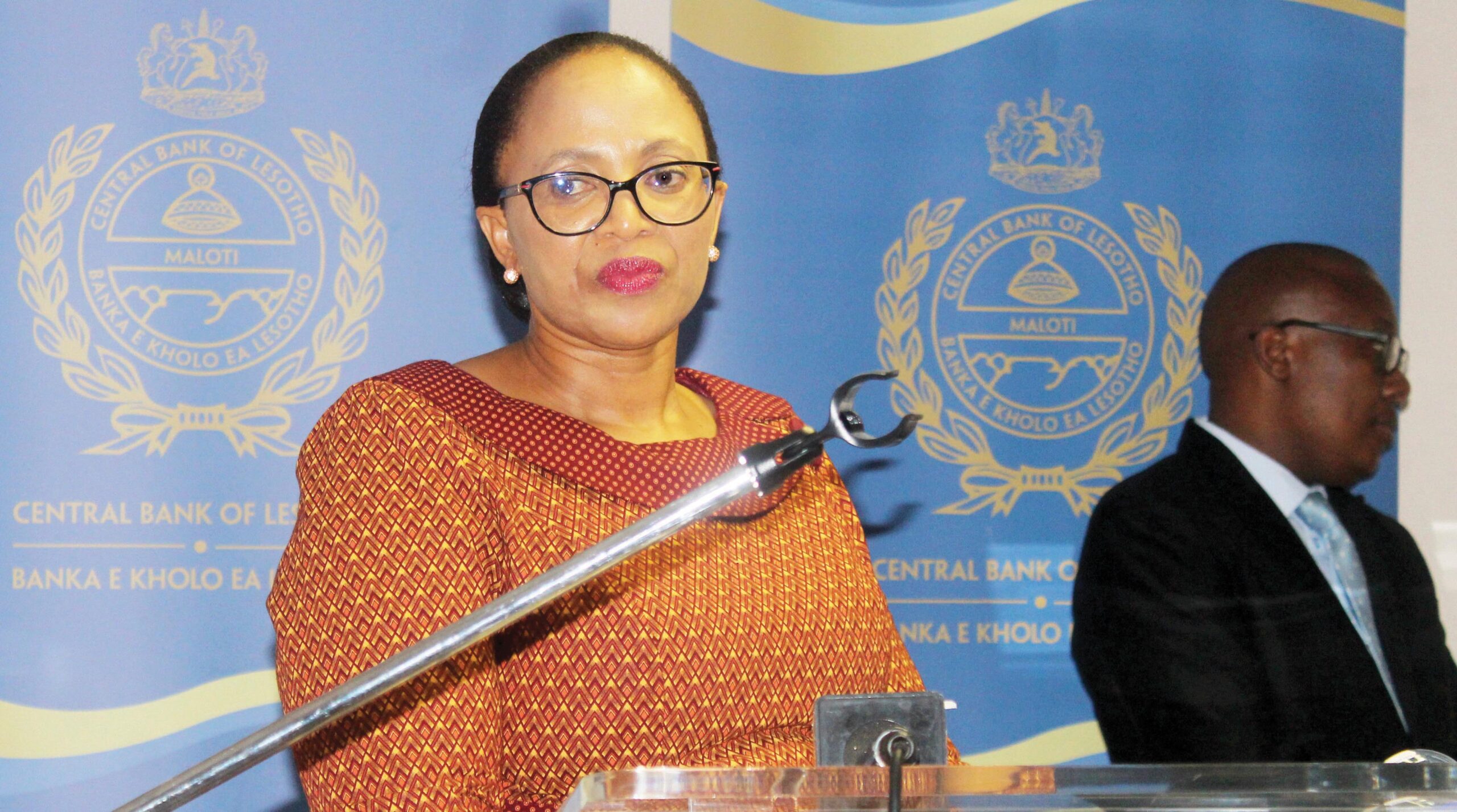Bereng Mpaki
THE Central Bank of Lesotho (CBL) has reduced the CBL rate to 6, 50 percent from 6, 75 percent to stimulate economic activity.
The CBL has also reduced the target floor for the net international reserves (NIR) from US$755 million to US$750 million.
These decisions were made at the apex bank’s monetary policy committee’s (MPC) meeting held this week, where it was noted that economic activity in the country had slowed down.
The committee considers international, regional and domestic economic developments and financial markets conditions, to determine monetary policy action to taken in executing the CBL’s primary mandate of maintaining price stability.
CBL governor Retšelisitsoe Matlanyane told the media after the committee’s meeting that the said the measure of economic activity indicated a decreasing growth rate. She said this was attributed to a weak performance of the country’s manufacturing sector.
“The domestic economic activity slowdown in Aril 2019,” Dr Matlanyane said.
“The CBL measure of economic activity indicated that output had increased at a lower rate of one percent in April 2019 compared with an increase of 1, 3 percent in the preceding month.
“This was on the back of weak activity in the manufacturing sector. In the labour market, employment by the LNDC assisted firms declined further by a percentage point on an annual basis in the first quarter of 2019 following the decline of 2, 2 percent in the fourth quarter of 2018.”
The inflation rate on the other hand, has slowed down to 5, 6 percent in June 2019 from 5, 9 percent in May.
“The inflation rate, measured by year on year percentage change in consumer price (CPI), declined to 5, 6 percent in June 2019 compared with 5, 9 percent in May 2019. The major contributors to this deceleration were food and non-alcoholic beverages, housing, electricity, gas, and other fuels and transport.”
Dr Matlanyane indicated that risks to the domestic economic outlook include exposure to global economic developments, weak domestic economic activity on the back of structural rigidities and policy uncertainty.
“In summary, the global economic activity remained strong, despite heightened risks. Domestically, growth was weak, while consumer prices inflation decelerated in June 2019.
“Risks to the domestic economic outlook include exposure to global economic developments, weak domestic economic activity on the back of structural rigidities and policy uncertainty.
“The committee will continue to monitor the global development and their likely impact on domestic macroeconomic conditions, especially the CBL net international reserves (NIR), with the aim of taking corrective action when needed.”
She added that the global economic activity was relatively strong in the first quarter of 2019, amid heightened downside risks and indications of weakening global trade.
“During the first quarter, output growth in the advanced economies remained relatively strong, mainly driven by robust economic activity in the US. In the second quarter of 2019, the unemployment rate declined moderately in all advanced economies. Downside risks to the global economic outlook arise from the continuing trade and geopolitical tensions and other country-specific factors.
“Global inflation rates remained low. Inflationary pressures eased in advanced economies with the US and Euro Area registering decelerations while moderate increases were seen in Japan and the UK. The monetary policy stance remained accommodative across the advanced economies, with most countries keeping their policy rates unchanged from March 2019 to date.
“In emerging markets economies, economic growth rates declined in India and South Africa, and remained unchanged in China in the first quarter of 2019. In South Africa, economic growth is expected to rebound in the second quarter of 2019, boosted by the mining and manufacturing sectors.
“Low business confidence undermines growth prospects in the medium term while risks to long term growth emanate largely from structural challenges. The annual rate of headline inflation measured by changes in the consumer price index, CPI for all urban areas, was recorded at 4,5 percent in May 2019,” Dr Matlanyane said.


